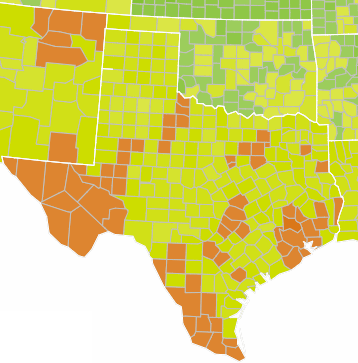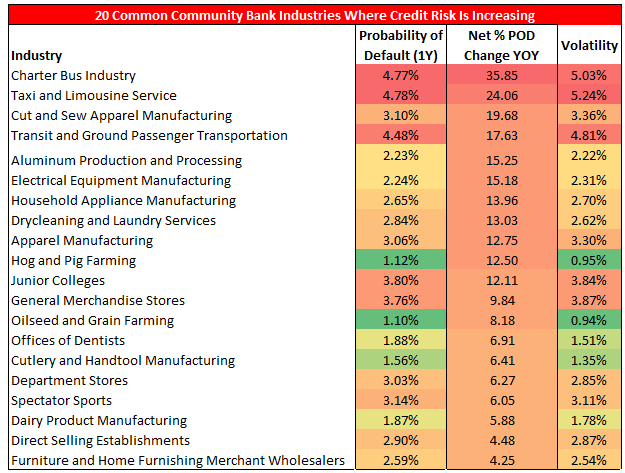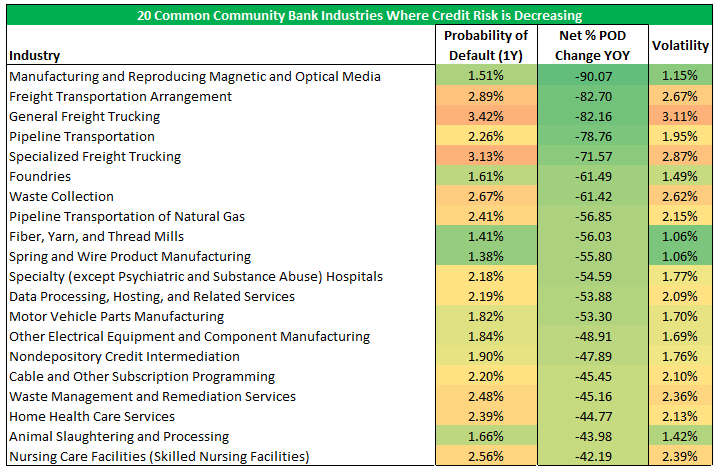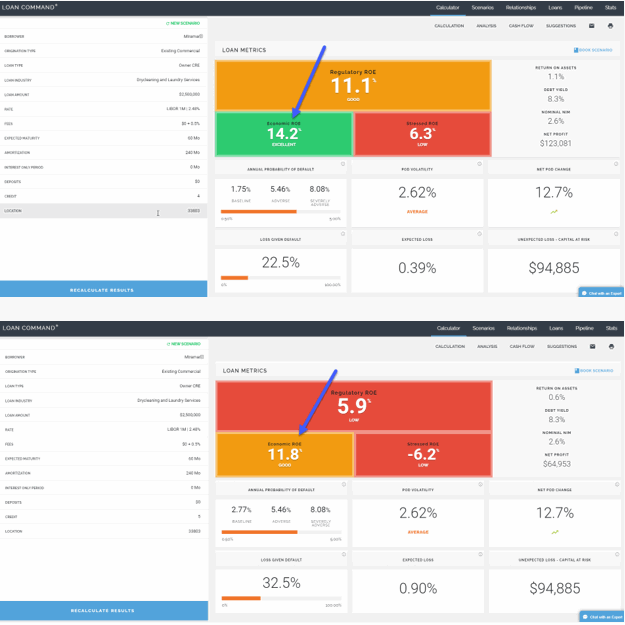Getting More Granular on Credit Risk in the Midst of the Pandemic
Credit is always changing, and CenterState watches a variety of markers such as corporate bond credit spreads, vacancy rates, net effective rents and many others in order to help us understand credit. Three of those important credit metrics are the probability of default (POD) by industry, the rate of change of that POD, and the volatility of credit of each industry. The CSB Correspondent Division just received fourth-quarter, forward-looking, annual probabilities of default driven by PayNet, and we have run our analytics. It is important to note that credit is Volatile, and these projections are simply that – projections.
In this article, we discuss a summary of credit trends for new loans, highlight pricing changes taking into account both credit and tax reform and provide the top ten industries where credit is improving and deteriorating.
What Is Happening To Bank Credit
For starters, to not skew the data, for the purposes of this analysis, CenterState bankers excluded all industries with NAICS codes of 71 (amusement) and 72 (restaurants and hospitality). These industries are so impacted by the pandemic that no accurate model that we know of exists and including them in our analysis impacted our analysis and our objective of uncovering lesser-known areas of credit. Most banks understand the credit risk of lending to these industries at present.
Looking at the remaining universe of community bank credit, the average forward-looking probability of default for bank credit came in at 2.2%, or about 0.73% better than the same industries compared to 2019. That is impressive given all that we have been through and speaks to a combination of low rates and stimulus. We also want to point out that this movement is well within the 47 basis points of POD movement for the year, so this could be nothing more than a statistical aberration.
It is still too early to know if credit improvement is a trend, but we remain optimistic that pent-up demand, the hope of decreasing COVID-19 spread due to vaccination efforts and more stimulus has been positive for the credit outlook.
One aspect of credit that will not come as a surprise is the fact that volatility increased for common community bank industries. The volatility of credit measured by one standard deviation of POD movement came in at about 20% higher. To put this in a practical context, while the average loan has a 2.2% probability of going into default on any given year, 68% of the time, that probability of default can range between 1.72% and 2.66%.
In addition to higher volatility across industries, geographies also dramatically increased in volatility. In January 2020, pre-pandemic, most counties within a state performed similarly. Now, population density, industry concentrations, ICU bed availability, COVID-19 cases, and local regulation all have a material impact on a bank’s risk-adjusted return. Some counties in Texas, for example, have above a 3.25% average probability of default, while the county next door is half that.

With the increase in default volatility, this means that banks would be prudent to become more granular and careful in their analysis of both industries and companies within an industry.
Deteriorating Industries
Based on the analysis of our bankers, primarily, the deterioration of credit was driven by negative changes in non-freight transportation (impacted both by COVID-19 and the continued impact of ride-sharing), retail, education, and select commodities.

Of interesting note to banks, much of the credit volatility and dispersion occurred in the healthcare field. For the past twenty-plus years, most medical specialties performed within a couple of percentage points of each other. Lending to a urologist medical group was about the same as lending to a dentist. Now, that isn’t the case as the dental profession has been hit disproportionately hard (a 1.9% POD, up 7%), as have many of the more elective medical procedure groups.
Improving Industries
On the positive side, based on our analysis, credit improved in freight transportation, data processing/cloud services, waste, cable despite Netflix taking more market share), and select healthcare lines.

Pricing
In terms of pricing, 2020 saw the highest increase in loan pricing volatility since the Great Recession. After hitting near-record lows in January, pricing widened out in March as a result of COVID-19, and then prices spiked to three times their normal levels during the second week in May. Since then, pricing has come steadily down and has gone from an average of a credit spread of 2.41% at the start of the year to 2.57% now, excluding hospitality.
However, this increase in general pricing doesn’t tell the full story for banks. The current average pricing excludes much higher-risk industries such as retail and education that banks have largely stopped lending to, in addition to hospitality. Further, as mentioned before, volatility has increased.
Banks that are not paying attention could find their return on equity over time is substantially lower than expected.
To give banks a feel for this impact of credit and taxes, we first priced a typical 20-year amortizing loan due in five years at a credit spread of + 2.48%. The change in the forecasted credit drops this $2.5mm loan to a dry cleaner from a 14% risk-adjusted ROE loan to an 11.8% risk-adjusted return on equity loan as the probability of default moved from 1.75% to 2.77%.

As can be seen above, getting more granular on credit and pricing can make a material impact on loan performance, not just in 2021, but over the next several years, as well, as some of the credit and pricing decisions we make today stay with us for some time. Having a pricing model, a view on credit, and the latest data has never been more important.
Putting This Into Action
Banks that track industry credit changes have a clear advantage, as they can proactively select certain industries and more efficiently construct a credit portfolio. Banks that are still trying to target a non-risk-adjusted net interest margin will find themselves losing more quality transactions and likely gaining lower credit quality borrowers. Tax law changes, potentially deteriorating credit, and higher rates will create some clear industries that are winners and losers. Banks need the ability to create a loan portfolio with intent and proactively go after those credits that they desire.

